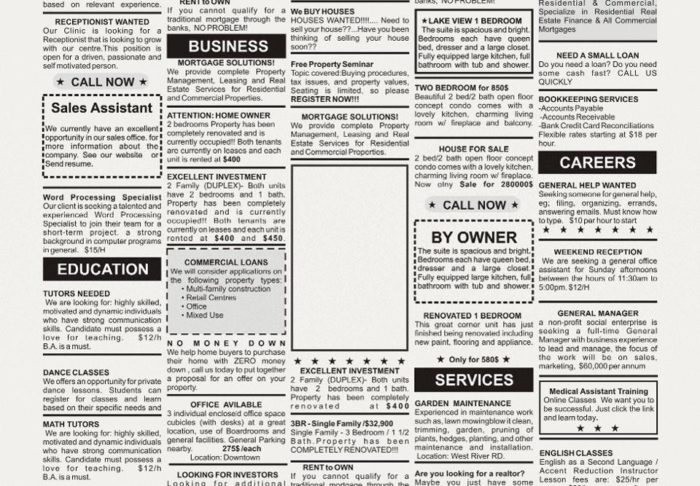One Marketing Lesson Today’s Listing Agents Should Learn From The 1980s

When did “advertising” morph into “marketing?” And precisely how well is either working for real estate in 2019? When I entered the residential brokerage business in the fall of 1980, there was no such thing for us as “marketing.” Every week, we wrote ads. Depending on how well you were doing as an agent, you got either one, two, or three ads. They all appeared in columns at the back of the New York Times Sunday Real Estate section; that section dominated our lives. We eagerly compared our columns to those of our competitors to see who had more column inches. I still remember the excitement and pride a three full column week created for us.
Since there were no exclusive listings back then, we also pored over the columns to figure out what listings our competitors had which we didn’t; we hoped the locator lines (70th to 79th Street, Park Avenue) and brief descriptions would be adequate to narrow the quest down to a few buildings. Once we felt we had the building or buildings nailed, we went off to tip the doormen in hopes of gathering the information necessary to call the owner and bring the listing into the office. That was vital work, for which agents in those days received 10 percent listing fees if our firm sold the property. No one had even heard of co-broking.
Brokers placed the ads, of course, in order to persuade customers to call. The trick to writing a good ad was to make it enticing but still vague enough to attract a wide array of callers. Even then, the goal was never really to sell the listing, although that was great if it happened. The goal was always to attract buyers.
In the world of 2019, brokers no longer “advertise” property, now we “market” it. In some ways, the change in nomenclature reflects a more sophisticated approach. Most agents now think more strategically about how they deploy marketing dollars, trying to create a balance between seller expectations and how best to advance their own brand. The Internet, of course, has changed everything. There are no more New York Times columns. Everything appears online, aggregated either by public-facing MLS sites or by companies like Zillow. the goal of which is to disintermediate agents by inserting themselves into the transaction as a marketing and referral source. Our listings now travel the globe in an instant, making the listing market transparent in a way it never was before.
While this transparency offers great benefits to buyers, it comes at a higher cost to sellers. Online marketing has opened the door to listings with multiple photographs, video tours, and lengthy room by room descriptions. Although sellers are enthusiastic about these changes, they don’t necessarily create a seller benefit. Such explicit and detailed information can as easily convince a buyer that the property is NOT for her as the reverse. Addressing this issue requires an understanding of what marketing can and cannot do.
Marketing does not sell a property. Marketing drives eyes to the property. At that point, that property and the agent assume responsibility. In the old days of ads, that worked fine. If the property seemed enticing from the printed description, buyers would call and be taken to see it. Maybe they loved it, maybe not. But they saw it. It’s different today. Seeing a property in three dimensions makes a very different impression from seeing photos and reading an exhaustive description (often seeming to be little more than a list of brand names.) But too often now, buyers will discard a property that may be a good fit for them based on the online description. When that happens, everyone loses.
Today’s market, in which inventory is at an extreme high, makes this issue more urgent for sellers than ever. Is the detailed description of their property, stacked up against so many other alternatives, helping or hurting them? The marketing works if it drives a lot of page views. If their listing page on the various sites where it appears gets a large number of views, but few requests for showings result, then there is a problem. Maybe the price is too high. Or maybe the endless photos and descriptions of marble colors don’t entice the buyer.
I believe strongly in holding some information back. Agents should use carefully curated photos. They should write enough to create excitement but not so much as to drastically limit the audience. Sometimes less is more.

